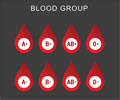Creating human blood, artificially, may not be as far-fetched a theory as once imagined. Researchers at the Johns Hopkins University claim to have identified the original version of human blood stem cells and have understood how they replicate and grow.
The researchers say that these stem cells are pinpointed by a biochemical marker called angiotensin-converting enzyme (ACE), which is well known for its role in the regulation of blood pressure, blood vessel growth, and inflammation.They believe that their findings can revolutionize treatments for heart diseases, anemia, leukemia and other blood cancers, and autoimmune diseases because ACE plays a fundamental role in the very early growth and development of human blood cells.
"We figured out how to get the 'mother' of all blood stem cells with the right culture conditions," says Dr. Elias Zambidis of the Institute of Cell Engineering at the Johns Hopkins University School of Medicine and the Division of Pediatric Oncology at the Sidney Kimmel Comprehensive Cancer Center at Johns Hopkins.
"There is real hope that in the future we can grow billions of blood cells at will to treat blood-related disorders, and just as critically if not more so, we've got ACE as a 'new' old marker to guide our work," he adds.
He has revealed that the research team discovered the role of ACE unexpectedly.
"But were very pleasantly surprised to discover it as a beacon for finding the earliest blood stem cells known, as well as new ways to find and manipulate this marker to make them grow," he says.
Advertisement
The researchers found not only that ACE was a marker for hemangioblasts, but also that turning off the enzyme also helped guide the cells' replication and maturation into either blood or endothelial cells.
Advertisement
Zambidis says that the next step will be to test this research in animal models and show that "we can make lots and lots of blood cells from human stem cells for transfusions, regenerate new vascular trees for heart diseases, as well as create test tube factories for making transplantable blood cells that treat diseases.
"We are very far from treatment, but this is a big step," he adds.
If the new technique of mass producing progenitor blood cells is eventually proven to work in humans, it would allow patients getting bone marrow transplants to have their own stem cells creating the blood they need, significantly reducing rejection risk.
Source-ANI
TAN/L












